Quirimbas Archipelago March 19 – 22
March 19 Monday: Nampula – Tandanhangue by Bus and Truck: A Day of Disaster
I kept waking up after 2am as I was anxious I might miss the bus. The taxi driver who was supposed to pick me up at 4am did not turn up. But the watchman helped me to find a taxi to the bus depot three kilometre away from the centre. I got there around 4:20am and queued for 15 minutes to get a ticket (500Mtc). The bus almost full pulled out of the depot at 5am. But it stopped on the road for 20 minutes to wait for a few passengers.
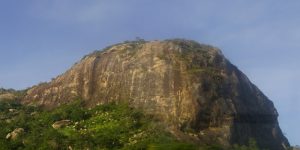 The bus takes R106 to Pemba. On the bus, I met a local who speaks good English. On knowing that I was going to Ibo Island in Quirimbas Archipelago, he suggested me take the other bus from the same company heading north to Mueda where I could get a chapa to Tandanhangue (the pier). It was early and I should be able to reach the Ibo Island today. Great! I took his advice and jumped off the bus when we saw the other bus pulling on the road side before Alua. The bus to Pemba then left. To my horror, the bus to Mueda had broken down. That was the reason it stopped when our bus arrived. My bus driver should have told me and I would not get off then. Too late. What could I do? It is Africa and I do not how long I may have to wait for something to happen. Then a bus heading north to Mocimboa da Praia arrived. I decided to take it and paid 250Mtc. It was 8am when I continued my journey to somewhere I had no faint idea!
The bus takes R106 to Pemba. On the bus, I met a local who speaks good English. On knowing that I was going to Ibo Island in Quirimbas Archipelago, he suggested me take the other bus from the same company heading north to Mueda where I could get a chapa to Tandanhangue (the pier). It was early and I should be able to reach the Ibo Island today. Great! I took his advice and jumped off the bus when we saw the other bus pulling on the road side before Alua. The bus to Pemba then left. To my horror, the bus to Mueda had broken down. That was the reason it stopped when our bus arrived. My bus driver should have told me and I would not get off then. Too late. What could I do? It is Africa and I do not how long I may have to wait for something to happen. Then a bus heading north to Mocimboa da Praia arrived. I decided to take it and paid 250Mtc. It was 8am when I continued my journey to somewhere I had no faint idea!
This bus is older and dirtier. The passengers looked at me as though I came from Mars. I sat next to a young man who tried to have a conversation with me by using a translation app. I was moved when he bought a couple of boiled eggs at one of the bus stops and offered me one. He works for Vodacom as a customer service officer. As the bus stopped at the junction of R106 and 242, vendors rushed up trying to sell fruits, drinks, fried chicken, bread, egg, peanuts etc. I asked the young man who sat by the window to take a few photos. A few minutes later, a policeman came onboard and demanded to see the photos. I showed him what the young man had taken. On the last one, the photo had captured his image at a far corner. With the evidence in hand, he ordered both of us to get off the bus as no one can take photos of police and the guard post. We were in trouble!
I tried to explain that we had no intention to take a photo of him and immediately deleted all the photos in my camera. He was not satisfied and demanded us to go with him to the police station. But the driver and a couple of men warned me not to go: the police were trying to find an excuse to extort money. One man asked me whether I had 3000Mtc to pay them off. I said ‘No’. They told to get back to the bus. But I could not go without the innocent young man who had been led away. The next moment, another man in a long robe jumped out and tried to grab me and my suitcase to another vehicle. My driver and other passengers urged me to get on the bus and leave. When I tried to climb up the steps of the bus while telling the man to leave me alone, I hit my left leg on one of the steps. The next moment, I found a wound of about eight inches below my left knee with blood staining the lower part of my pant and my left foot. Oh God! It was dramatic when I watched a big purple lump about 20cm swelling within seconds. The blood was deep red and purple in colour. What happened? I was scared. Without a word, the driver took a bottle from the right side of his seat and poured the golden liquid over the wound. I was equally shocked when bleeding stopped immediately and within half an hour, the big lump had almost gone! I thought the innocent young man was back on the bus. But I later found out that the bus had left without him. I felt guilty. What had happened to him? I pray for his safety and often think about him. I hope he has been released without penalty and bodily harm.
 My drama continued. At noon, the bus driver told me to get off at the junction near Muaguide and got on a small truck which already had a dozen of passengers. With the bleeding on my left leg, I had difficulties in climbing into the truck and even more difficulties in finding space to sit. It was a most uncomfortable ride on a dirt road especially I had come totally unprepared: I had a deep cut in my left leg, no sun cream, a short-sleeved T-shirt instead of a long-sleeved shirt and a cap instead of a big hat. I tried to keep the wound off flies and dirt.
My drama continued. At noon, the bus driver told me to get off at the junction near Muaguide and got on a small truck which already had a dozen of passengers. With the bleeding on my left leg, I had difficulties in climbing into the truck and even more difficulties in finding space to sit. It was a most uncomfortable ride on a dirt road especially I had come totally unprepared: I had a deep cut in my left leg, no sun cream, a short-sleeved T-shirt instead of a long-sleeved shirt and a cap instead of a big hat. I tried to keep the wound off flies and dirt.
 What I thought to be a short ride lasted four and a half hours! It is truly an African experience for me: it was the first long truck ride on a dirt road through a tropical forest with a dozen passengers and loads of goods. We passed by a dozen of rural communities. As a matter of fact, the scenery is pleasantly green and picturesque with big clusters of hatched weed, mud huts and fields under cultivation. Had I travelled in a more comfortable vehicle, I could have taken plenty of photos capturing the people, scenery and landscape.
What I thought to be a short ride lasted four and a half hours! It is truly an African experience for me: it was the first long truck ride on a dirt road through a tropical forest with a dozen passengers and loads of goods. We passed by a dozen of rural communities. As a matter of fact, the scenery is pleasantly green and picturesque with big clusters of hatched weed, mud huts and fields under cultivation. Had I travelled in a more comfortable vehicle, I could have taken plenty of photos capturing the people, scenery and landscape.
The truck is old and in a terrible state. It broke down four times and the driver had to put in water to cool it down. At times, the passengers had to give it a push to start the engine. We passed Bilibiza, Mahate and Quissanga and finally arrived at the pier in Tandanhangue at 4:30pm. The driver asked me for 500Mtc which I know is excessive. But I paid without complaint as they have a hard life.
At the pier, I saw a French family with four kids and a baby at the pier talking to a captain. I approached them and asked whether I could take a boat with them to Ibo. After bargaining for half an hour, we were told that no boat could depart after 4pm. The captain agreed to take eight of us in his boat at 4am the next day for 2500Mtc.
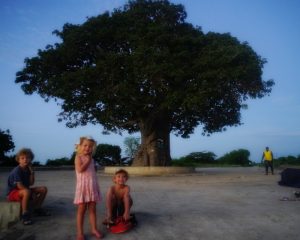 I was lucky to meet this family at the pier. Fabian, a French, is an economist working for a NGO in Malawi with his wife Francesca (an Italian doctor). They have three boys (Anton8, Damian6 and Aines2) and two girls (Ines4 and 3-month-old Timbit). They invited me in their big tent. The family is used to wild camping and Fabian made a fire without problem. While the parents were looking after the four young ones, Anton and I were responsible for keeping the fire going and putting the pasta into the boiling water when ready. While I was trying to find out whether the water was boiling, the cooking pot suddenly tipped over. The water in the pot was gone! I was clumsy and felt very bad as the children were tired and hungry. Fabian came and we started all over again. Fabian and Anton kept the fire going and the pasta was ready half an hour later.
I was lucky to meet this family at the pier. Fabian, a French, is an economist working for a NGO in Malawi with his wife Francesca (an Italian doctor). They have three boys (Anton8, Damian6 and Aines2) and two girls (Ines4 and 3-month-old Timbit). They invited me in their big tent. The family is used to wild camping and Fabian made a fire without problem. While the parents were looking after the four young ones, Anton and I were responsible for keeping the fire going and putting the pasta into the boiling water when ready. While I was trying to find out whether the water was boiling, the cooking pot suddenly tipped over. The water in the pot was gone! I was clumsy and felt very bad as the children were tired and hungry. Fabian came and we started all over again. Fabian and Anton kept the fire going and the pasta was ready half an hour later.
I felt disgustingly filthy after spending almost twelve hours in two dirty buses and an open truck. Francesca bought 30litre of clean water for cooking and washing. But the container was leaking and we were left with only for cooking and washing our faces. I had no wet tissue as I was not prepared for camping at all. They kindly gave me a mosquito net and a mattress. Francesca checked my wound and gave me antiseptic to put on it after I cleaned it. I was surprised that I survived without mosquito bite. I even had a decent sleep as I was dead tired.
March 20 Tuesday: Tandanhangue – Ibo Island by Boat
 We got up after 4am, took the tent down and we took off at sunrise. The journey took less than an hour. We watched a beautiful sunrise and arrived in Ibo before 6am. This idyllic island has a population of about 4000. It rivals Mozambique Island as one of the country’s historical highlights. I am impressed by the wide and quiet streets lined with dilapidated villas and ruin. The buildings have different architecturally styles: many have elegant porches and columns.
We got up after 4am, took the tent down and we took off at sunrise. The journey took less than an hour. We watched a beautiful sunrise and arrived in Ibo before 6am. This idyllic island has a population of about 4000. It rivals Mozambique Island as one of the country’s historical highlights. I am impressed by the wide and quiet streets lined with dilapidated villas and ruin. The buildings have different architecturally styles: many have elegant porches and columns.
There are seven lodges/hotels/camping grounds on the island (a new one run by the Spanish would be opening shortly). I chose to stay at Cinco Portas which has with eight rooms, a lush green garden and a pool close to the pier. The lodge is owned by a Swiss and has a marvellous Swedish chef, Christian. I took a room with fan and not air-con for US$50. The family of 7 stayed in a campsite Karibuni on the other side of the island.
 With my fresh wound and heat, I dared not walk too much. Cinco Portas is so lovely and cool that I had a lovely breakfast in the garden and rest till my friends turned up around 11am. They were heading Miti Miwiri, a lodge near Cinco Portas where their children could use the pool. This lodge has spacious rooms but no sea view is run by a German and his Mozambican wife. I sat in the shade watching the three boys swimming. Ines had a high fever for two days and looked miserable. Baby Timbit was great without crying much. She is a happy and adaptable baby.
With my fresh wound and heat, I dared not walk too much. Cinco Portas is so lovely and cool that I had a lovely breakfast in the garden and rest till my friends turned up around 11am. They were heading Miti Miwiri, a lodge near Cinco Portas where their children could use the pool. This lodge has spacious rooms but no sea view is run by a German and his Mozambican wife. I sat in the shade watching the three boys swimming. Ines had a high fever for two days and looked miserable. Baby Timbit was great without crying much. She is a happy and adaptable baby.
I returned to my lodge after 1pm and stayed indoor till 4pm. I walked slowly to the western side of the island to look for my friends at Karibuni which also offers some basic rooms in local-styled thatched huts. But next to it is the luxurious Ibo Island Lodge run by a South African, which roof-top bar offers the best spot to watch sunset around 5pm.
 Today, I watched a miraculously beautiful sunset which started off as just another sunset. Soon, it turned into orange, then crimson and finally purple colours.
Today, I watched a miraculously beautiful sunset which started off as just another sunset. Soon, it turned into orange, then crimson and finally purple colours.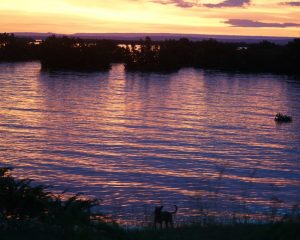
Francesca had asked her host to prepare fish and rice for dinner. I was not disappointed: the grouper was fresh and meaty and the rice cooked with tomato and garlic was tasty. I watched the lady preparing the food and thoroughly enjoyed the dinner (250Mtc). After dinner, Francesca walked me back to my lodge and met the captain to firm up a boat trip the following morning. By 9pm, I settled comfortably in my bed with a fan on. I had an excellent sleep.
March 21 Wednesday: Turtle and Dolphin Boat trip
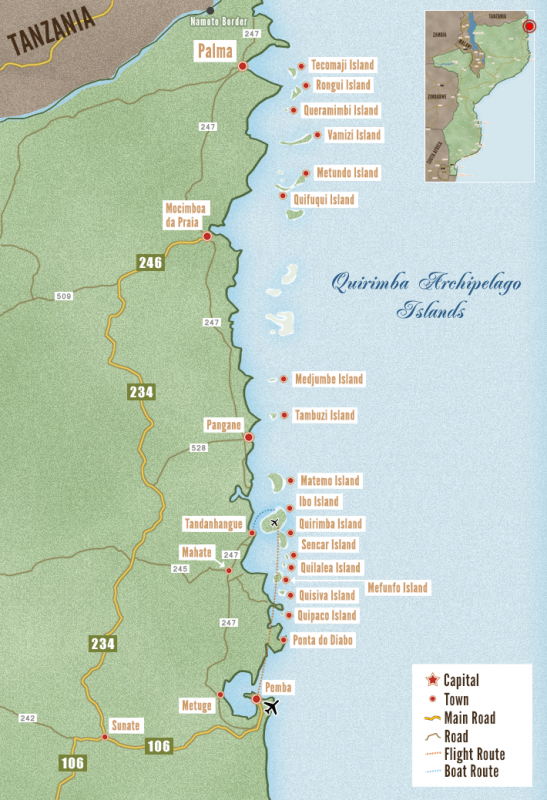 The Quirimbas Archipelago and Quirimbas National Park
The Quirimbas Archipelago and Quirimbas National Park
The Quirimbas Archipelago lying in the Indian Ocean off north-eastern Mozambique and up to the Tanzanian border, comprises 32 coral islands. The most well-known islands include Ibo, Matemo, Medjumbe, Quirimbas, Rolas and Vamizi. Only four islands were inhabited before independence in 1975. Originally home to fishing settlements, the islands’s population grew around Arab trading posts and thrived under the Portuguese who began to arrive in the 16th century. When the Portuguese started occupying cities in the islands such as Ibo, the Arab merchants refused to trade with the Portuguese and moved to other parts of the island. Today most of the islands are inhabited and the residents are largely rural fishermen.
Internationally, the Quirimbas islands are known for their idyllic beaches, pristine water and diving sites. The Quirimbas National Park spanning an area of 7,500km2 and encompassing the southern part of the archipelago with 11 islands, coastal forest, mangroves and coral reefs, boasts a variety of vegetation and marine life including sea turtles, dolphins and over 375 species of fish. A significant portion of the park is on the mainland with sparse populations of elephants, lions, leopards and crocodiles.
 I met up with my friends and a young captain at the pier before 6am. We did not have far to before watching a dozen of turtles poking their heads out of the crystal clear and calm water. Some came very close to our boat.
I met up with my friends and a young captain at the pier before 6am. We did not have far to before watching a dozen of turtles poking their heads out of the crystal clear and calm water. Some came very close to our boat.
Then the captain moved to boat to an area closer to the reef. The constant movements of the sea bring food to the dolphins. We saw pods of bottlenosed dolphins around our boat and watched people from other boats swimming with the dolphins.
By 9am, the sun was unbearably hot and burnt my legs. It was around 11am when I was back in Cinco Portas. I had a brunch and a nap. While working on my travel notes in the garden, my phone suddenly fell from the table and had a hard landing. It went dead immediately! Luckily, I still have my computer which enables me to stay in touch with my family and friends through emails. (As the phone cannot be turned on, it is impossible to retrieve the contact list saved in the phone).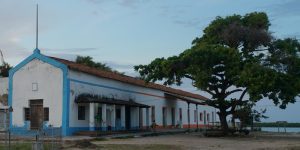
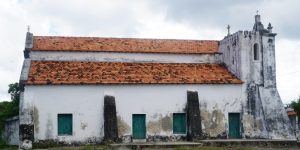 Around 3:30pm, I joined Kaitlyn and Ryan, an American couple from Maine on a walking tour with Raul as our guide (825Mtc pp). I am glad to learn something about the glorious past of Ibo as a trading hub for the Arab and Indian. The Chinese merchants had also been active on the island as sea cucumber which is a delicacy for the Chinese, was abundant here. Since the area is now protected as a national park, commercial harvesting of sea cucumber is not allowed. Today, no Chinese lives on the island.
Around 3:30pm, I joined Kaitlyn and Ryan, an American couple from Maine on a walking tour with Raul as our guide (825Mtc pp). I am glad to learn something about the glorious past of Ibo as a trading hub for the Arab and Indian. The Chinese merchants had also been active on the island as sea cucumber which is a delicacy for the Chinese, was abundant here. Since the area is now protected as a national park, commercial harvesting of sea cucumber is not allowed. Today, no Chinese lives on the island.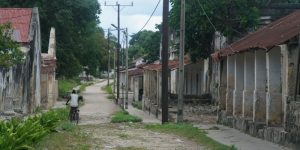

The atmosphere and the architectural styles of the Stone Town on Ibo are totally different from those on Mozambique Island. Here one finds a unique mixture of European, Indian and Arabian styles with traditional Swahili techniques. The flat orange tiles found on the roof of the oldest buildings had come from Marseille. Raul used to work in the building of Cinco Portas managing a sea cucumber processing facility. It has been turned into a lodge for over 15 years. The next building was a former warehouse. Further down the broad sandy boulevard are important government buildings including the governor’s house and office, customs office, police headquarters, banks and the cathedral.
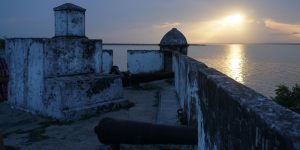 We followed the main road and soon arrived at Ibo Island Lodge. Soon we arrived at the Fortaleza São Sebastião which is an excellent spot to watch sunset. All of a sudden, I had diarrhea and had to find a toilet. I knew I could not go on and left the group. The closest place where I could find a proper toilet is the campsite where my friends stayed next to the Ibo Island Lodge. I ended up going to toilet twice within half an hour. When I felt better, I went to the roof top of the Ibo Island Lodge to watch sunset.
We followed the main road and soon arrived at Ibo Island Lodge. Soon we arrived at the Fortaleza São Sebastião which is an excellent spot to watch sunset. All of a sudden, I had diarrhea and had to find a toilet. I knew I could not go on and left the group. The closest place where I could find a proper toilet is the campsite where my friends stayed next to the Ibo Island Lodge. I ended up going to toilet twice within half an hour. When I felt better, I went to the roof top of the Ibo Island Lodge to watch sunset.
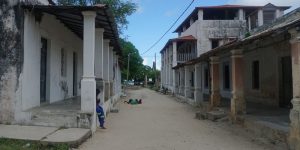 After sunset, I returned to the campsite to wait for a new captain who would organise a boat trip to Matemo Island the next day. As I have not written his name down, I cannot remember his full name. But his name begins with A (Hence I refer him as A). Francesca who speaks Portuguese, discussed where to go and the price with A for over half an hour. Finally we agreed to pay 12,000Mtc (i.e I paid 4000Mtc to Francesca) and A would take us to Matemo Island the following day and dropping them off at Tandanhangue on March 24. On the way to Matemo Island, we would swim with dolphins close to Ibo Island, visit a sandbank between the Ibo and Matemo Islands, snorkel off the Rolas Island and visit Rolas Island. We would have a rest day on Matemo Island on May 23. A would take me back to Ibo after dropping my friends off at the pier. Perfect!
After sunset, I returned to the campsite to wait for a new captain who would organise a boat trip to Matemo Island the next day. As I have not written his name down, I cannot remember his full name. But his name begins with A (Hence I refer him as A). Francesca who speaks Portuguese, discussed where to go and the price with A for over half an hour. Finally we agreed to pay 12,000Mtc (i.e I paid 4000Mtc to Francesca) and A would take us to Matemo Island the following day and dropping them off at Tandanhangue on March 24. On the way to Matemo Island, we would swim with dolphins close to Ibo Island, visit a sandbank between the Ibo and Matemo Islands, snorkel off the Rolas Island and visit Rolas Island. We would have a rest day on Matemo Island on May 23. A would take me back to Ibo after dropping my friends off at the pier. Perfect!
Tonight, I had prawns and rice for dinner at Cinco Portas. Christian is a fantastic cook: his cooking is highly commended as the best on the island.
March 22 Thursday: Matemo by Boat
 Our captain A accompanied me on a shopping trip at 6:30am. We got bread, 17 bottles of drinking water, a couple of tins of sardines and some biscuits for the next two days. He also arranged a truck to fetch luggage for the family. We finally set off before 8am.
Our captain A accompanied me on a shopping trip at 6:30am. We got bread, 17 bottles of drinking water, a couple of tins of sardines and some biscuits for the next two days. He also arranged a truck to fetch luggage for the family. We finally set off before 8am.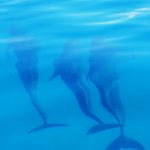
We first sailed to the area to watch and swim with dolphins. Given the wound on my left leg, I did not plan to get into the water. But the water was irresistible and I finally jumped in with my mask and tube. But once I was into the water, I found the water not as clear as I had thought. Hence, I could not see the dolphins unless they swam past me. After a short while, I got out of the water and enjoyed watching the playful dolphins from the boat. As the boat’s engine had trouble, A had to ask for a new engine from Ibo. While we were waiting, we had a fun time watching dozens of dolphins swimming around the boat.
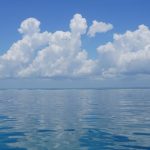 Our second stop was the sandbank lying between Ibo and Matemo Islands. It only appears during low tide. I must have walked over a kilometre from one end to the other. The sun was too strong and I returned to the boat to stay in the shade. Two couples who had paid more for their trip, had VIP treatment: they sat on sundeck chairs in a gazebo tent and had lunch served.
Our second stop was the sandbank lying between Ibo and Matemo Islands. It only appears during low tide. I must have walked over a kilometre from one end to the other. The sun was too strong and I returned to the boat to stay in the shade. Two couples who had paid more for their trip, had VIP treatment: they sat on sundeck chairs in a gazebo tent and had lunch served.
We had our bread on the boat. Just north of the sandbank beach lies a 19th century coal steamer wreck in shallow water. I saw the boat of these two couples went to the wreck before coming to the sandbank.
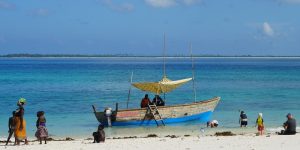 We sailed past Matemo Island and dropped the anchor close to Rolas Island for snorkelling. There are plenty of healthy and colourful hard and soft coral. The water was clear. I spent more time in water than I realised. When I returned to the boat, I found my back was lightly sunburnt.
We sailed past Matemo Island and dropped the anchor close to Rolas Island for snorkelling. There are plenty of healthy and colourful hard and soft coral. The water was clear. I spent more time in water than I realised. When I returned to the boat, I found my back was lightly sunburnt.
 Then we spent an hour on Rolas Island with a fishing community. I watched a canoe coming back with a few kilos of fish. I loved to buy some for dinner. But as I would be staying in a local village with dinner served, there was no point in getting a fish. I saw many ladies with their face painted as a sunscreen.
Then we spent an hour on Rolas Island with a fishing community. I watched a canoe coming back with a few kilos of fish. I loved to buy some for dinner. But as I would be staying in a local village with dinner served, there was no point in getting a fish. I saw many ladies with their face painted as a sunscreen.
Shortly after 3pm, we sailed to the northern shore of Matemo Island which has a long stretch of white sand beach. Many tourists from Ibo spend a night or two on this Island. They can either set up their own tent or stay at a rustic lodge run by a local community about 2-3km from the beach. While Fabian set up his tent on the beach, I made my way to the local lodge. A kindly called the owner to arrange a motor bike ride for me.
The village has no electricity. The rustic lodge has several thatched huts, a dining hut, a clean toilet and a shower room. I had a a good shower with fresh and cool water from a bucket. I paid some 6000Mtc for a hut with a double bed, 450 Mtc for dinner and 350Mtc for breakfast. Kaitlyn and Ryan were also staying in the same lodge. We had rice, bean, fish, chip and steamed corn for dinner together. The food is simple but wholesome.
There is nothing to do in the evening. By 8pm, I was already in bed. I must be tired and fell asleep without problem. But I woke up a couple hours later as the hut was hot, airless and stuffy. I could not sleep and sat outside for a long time watching the starry sky and the mysterious Milky Way. Ryan and Kaitlyn who had been camping in South Africa, were smart and had brought their tent with them. Hence, they slept comfortably under the star on the beach!





